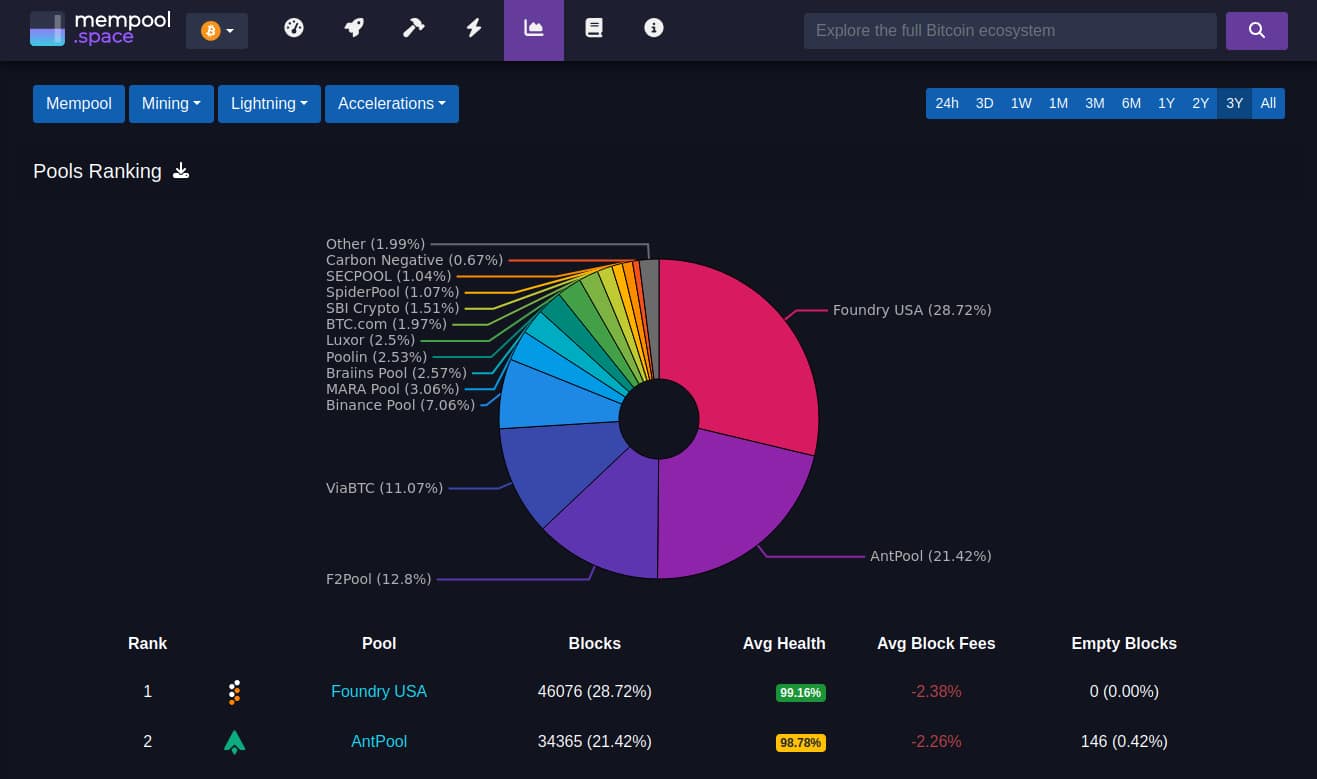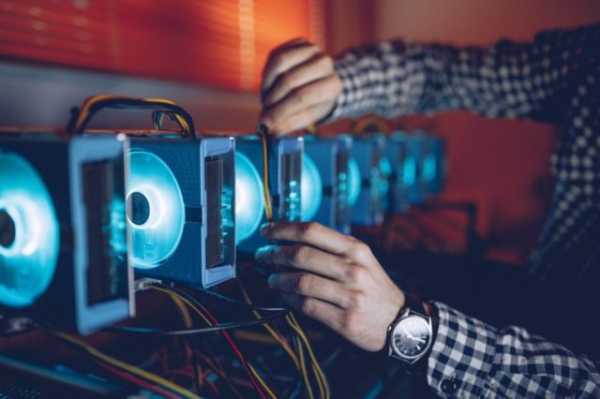Centralization Alert: Two Bitcoin Mining Pools Have Mined Over 51% of All BTC in the Last 3 Years

Bitcoin (BTC) proponents often claim that it is the most decentralized cryptocurrency, but the reality may be different. Onchain data shows that just two Bitcoin mining pools have mined more than 51% of all BTC over the past three years. This raises concerns about centralization in the leading blockchain network.
Finbold got this data from mempool.space, a Bitcoin data aggregator and block explorer collected directly from the observer node. This data effectively ranks Bitcoin mining pools by the number of blocks they have mined relative to the total number of blocks mined in a given period.
Over the past three years since March 28, 2025, two mining pools have dominated Bitcoin block mining.
In more detail, Foundry USA mined 46,076 blocks (28.72%) and AntPool mined 34,365 blocks (21.42%) out of 160,432. Together, these mining pools produced 90,441 blocks, which is 56.37% of the total over the past three years.

Why Having Only Two Mining Pools Above the 51% Threshold Matters
According to the white paper written by Satoshi Nakamoto, the core proposal of Bitcoin is to achieve consensus on the state of the blockchain in a decentralized manner. This is accomplished through Bitcoin mining, where special nodes (miners) apply computing power to solve cryptographic hashes and discover blocks.
After finding blocks, the miner gets the right to collect coinbase, which are newly created units of BTC. In addition to coinbase, miners can also include transactions in blocks, collecting the corresponding fees.
To do this, the miner needs to broadcast the block it found, along with its coinbase transaction and all external transactions. Other nodes, as Satoshi intended, will follow a longer chain, which means a chain with more proof-of-work attached to it, or with more blocks added.
There is a theoretical attack known as a 51% attack that could allow an attacker to double spend. Furthermore, Bitcoin mining pools can intentionally block transactions from being broadcast if they control enough mined blocks.
Finbold mentioned a case where F2Pool, the third largest Bitcoin mining pool, was caught (and then admitted) filtering transactions.
The Bitcoin network currently has a Nakamoto coefficient of two. This coefficient is a metric that measures the decentralization of a blockchain network, determining the minimum number of independent participants (such as miners) required to control or disrupt the network.
Bitcoin mining pools, not individual miners or nodes
Although each pool is supposedly made up of different miners, there is a pool coordinator, a single entity responsible for creating a block, broadcasting it to the network, collecting rewards, and if they choose, distributing it to their miners.
Thus, mining pools are the relevant entities when assessing the current state of decentralization of a blockchain consensus, rather than individual miners or nodes that may migrate only when it is too late in the event of a hypothetical attack.
We have also observed situations where transaction fees were not distributed among AntPool miners as expected, but were returned to the sender.
Moreover, AntPool also became a central figure in another discovery by a well-known analyst who goes by the pseudonym b10c. According to the researcher, the data shows that the second-largest mining pool may have a significant influence on five other Bitcoin mining pools.
By analyzing the Merkle branches that mining pools send to miners as part of Stratum jobs, it is clear that the BTCcom pool, Binance pool, Poolin, EMCD, Rawpool, and possibly Braiins* have identical templates and configurable transaction priorities as AntPool. https://t.co/KTjFWtTXEP pic.twitter.com/xhCrdvkOH8
— b10c (@0xB10C) April 17, 2024
In conclusion, Bitcoin's decentralization may be at risk because the scale of the economy leads to increased dominance by large miners. The more blocks a pool mines, the more rewards it receives from newly minted BTC and transaction fees. This allows for greater investment in infrastructure, easier access to capital, and further dominance in future block mining.
Main image courtesy of Shutterstock.
Source: cryptonews.net



